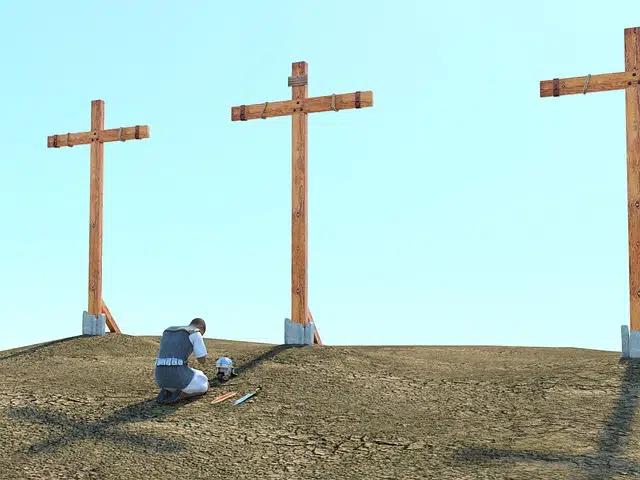
A genuflecting individual is one who is on his knees.
The adjective genuflecto describes someone who is on his knees . The term derives from the medieval Latin genuflexus , in turn linked to genuflectere (which translates as “to kneel” ).
Genuflexion, therefore, is the act of lowering the knee towards the ground . In ancient times, this action was a bow towards someone powerful. For a long time, for example, Christians have genuflected before the tabernacle that houses the Eucharist.
Genuflexing individuals in religion
The place where the sacred host is stored in churches belonging to the Catholic religion is known as the tabernacle or tabernacle . The sacred host is a piece of bread that is made without yeast (that is why it is called unleavened ) and with wheat flour; It is shaped like a circle and the priest gives it to the faithful as part of the mass at the time of the " offering " or "sacrifice without shedding blood."
Lowering the knee before the consecrated host is considered a sign of adoration towards Jesus Christ . At the same time, it reflects the believer's submission to divinity. The genuflection also appears before the pope .

Many religions lead the faithful to genuflect as a sign of adoration of divinity.
The priest's posture
In the context of the ordinary mass , that is, the one celebrated by the Catholic Church daily as part of the normal approach to God and his teachings but without any special or extraordinary reason, the priest must genuflect on different occasions, which are set out below. :
* as soon as it reaches the chancel (the area of the main altar that extends to the end of the steps by which one ascends to it; the chancel is generally delimited with a railing or fence), if it is reserved in the tabernacle the Holy One;
* after having raised the host;
* once you have raised the chalice with the sacred wine, which represents the blood that Jesus Christ shed to save human beings from the consequences of their own sins;
* before beginning the moment of communion ;
* throughout the entire celebration, once you have consecrated the host, each time you pass in front of the Blessed Sacrament.
The genuflecting faithful
As expected, the faithful must also genuflect in some of the same situations as the priest, although in the context of the mass they do not move from their seats. When visiting the church outside of a celebration, they must genuflect every time they pass the tabernacle, even if the consecration of the host has not taken place.
During mass, the consecration is one of the situations in which they must kneel, as well as the reading of the Gospel. In short, genuflection is a sign of adoration and respect that believers adopt as part of their communication with God.
The term today
In ancient times, a genuflection was also performed before a monarch . Nowadays, however, it is rare for an individual to genuflect in front of another human being , beyond maintaining protocol greetings such as bowing.
Currently, the use of the concept of genuflection is linked to abiding by all commands and fulfilling the will of someone with power . The genuflecting subject, in this framework, is symbolically kneeling before the other.
A journalist who, by receiving money and favors from a ruler, never criticizes him and limits himself to spreading positive news about his administration, can be described as genuflecting. Viewers, listeners or readers cannot expect an objective view of reality or impartial information, since the journalist in question is subordinate to the ruler and does not intend to upset him. This means that the reporter privileges compliance with the instructions of the powerful before fulfilling his work as a communicator.
